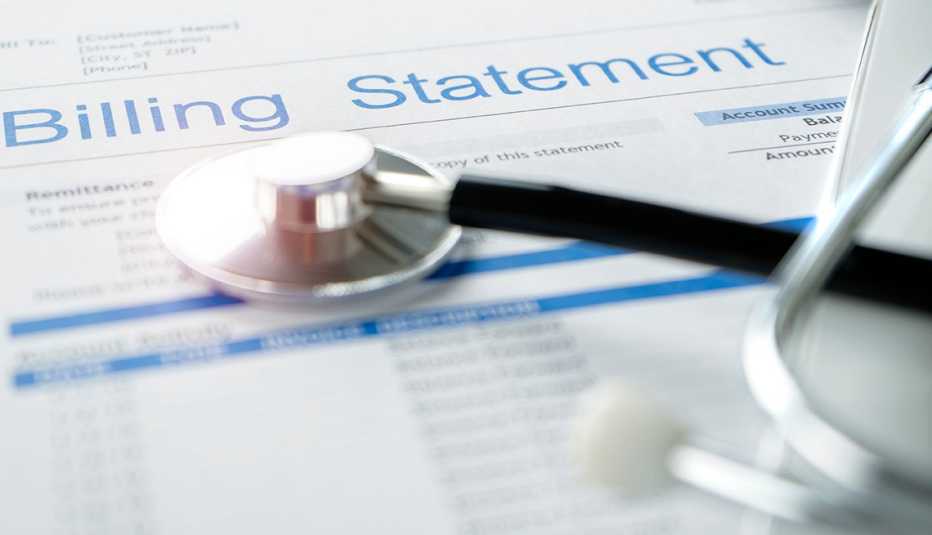Staying Fit


Other highlights from the report
- Per-person prescription drug spending jumped 29 percent between 2014 and 2018, totaling more than $1,118 at the end of the five-year study. Hormones accounted for the largest subcategory of prescription drug spending.
- Over the five-year period, spending on outpatient surgery visits increased 19 percent; spending on emergency room visits rose 32 percent.
- Per-person spending on inpatient admissions rose $116 between 2014 and 2018. Surgical admissions account for about half of inpatient spending.
- Per-person spending was highest among adults ages 55 to 64. The HCCI report, which looked only at people under age 65, is based on more than 2.5 billion medical and prescription drug claims for approximately 40 million people with employer-based coverage between 2014 and 2018.
The average amount spent on medical care for Americans with employer-based health insurance reached an all-time high of $5,892 per person in 2018, the latest data show. This was an 18 percent increase ($914) from five years earlier, according to a new report from the Health Care Cost Institute (HCCI). Total spending per person includes shares paid by both the insured and the insurer.
Services and Rx drive increase
Higher prices for medical services were the primary driver for spending growth over the five-year study period. Fees for inpatient care, outpatient care, professional services and prescription drugs jumped between 2014 and 2018, adding $453 after adjusting for inflation to per-person spending. A slight uptick in health care utilization (that is, individuals tapping more health services) also contributed to spending growth, the report found.


AARP Membership— $12 for your first year when you sign up for Automatic Renewal
Get instant access to members-only products and hundreds of discounts, a free second membership, and a subscription to AARP the Magazine.
How do these findings affect those with job-based insurance? For starters, the increasing cost of health care is one that is becoming more “burdensome” on individuals, says Paul Ginsburg, director of the USC-Brookings Schaeffer Initiative for Health Policy and the Leonard D. Schaeffer chair in health policy studies at the Brookings Institution. “Because increasingly, economists have been showing that [it's the individual] who pays for the higher premiums,” says Ginsburg, who was not involved in the report. “It's not the employers; it's the workers. They pay for it by basically having smaller wage increases.”
More out-of-pocket expenses and higher deductibles
Out-of-pocket spending rose 14.5 percent (or $114) during the five-year period, totaling an average of more than $900 per person in 2018. At the same time, the popularity of high-deductible plans also increased, from 25.8 percent to 33.5 percent. These plans have lower monthly premiums but place more out-of-pocket responsibilities on the individual.
When people have higher deductibles than they can handle, Ginsburg says, this can quickly snowball into real financial stress. “A lot of people don't have $3,000 if they should get sick and have large bills,” he observes.
The increase in health care utilization, combined with the rising price of services, is especially concerning if the services being accessed are not “high value,” Ginsburg says. Waste on unnecessary tests and unproven technologies will only continue to place more of a burden on the individuals and systems who pay for health care.
"If these price and utilization trends continue, we expect spending growth to stay on an upward trajectory in the coming years,” Niall Brennan, president and CEO of the HCCI, said in a statement.
Other highlights from the report
- Per-person prescription drug spending jumped 29 percent between 2014 and 2018, totaling more than $1,118 at the end of the five-year study. Hormones accounted for the largest subcategory of prescription drug spending.
- Over the five-year period, spending on outpatient surgery visits increased 19 percent; spending on emergency room visits rose 32 percent.
- Per-person spending on inpatient admissions rose $116 between 2014 and 2018. Surgical admissions account for about half of inpatient spending.
- Per-person spending was highest among adults ages 55 to 64. The HCCI report, which looked only at people under age 65, is based on more than 2.5 billion medical and prescription drug claims for approximately 40 million people with employer-based coverage between 2014 and 2018.

































































More on health
Sick of High Drug Prices?
Tell Congress it’s time to let Medicare negotiate for lower drug pricesOlder Adults Struggle to Pay Medical Bills Even With Insurance
Prescription drug prices, out-of-pocket services are causing financial stress1 in 5 Insured Patients Hit by Surprise Medical Bills After Surgery
Even when surgeons and hospitals are in-network, assistants and labs might not be